We checked in for a session of super cooling whole-body cryotherapy at Cryomed in Boston. The treatment involves using a tank combined with cold elements to help reduce inflammation in the body, pain and swelling caused by injury or muscle strain and promote a feeling of general well-being. When your body is exposed to cold treatment, it allows for a gentle “surge-like” jolt through the nervous system to the brain. This process also induces the release of endorphins resulting in better mental clarity and alertness.
Super cooling for longevity
Firstly, I have to put my hand up and disclose up front that I am one of those people who believes in taking freezing baths, hot saunas, and the Wim Hof method. There are many scientific references supporting whole-body cryotherapy.
I believe in the concept of placing your body under good but difficult stress to help it re-fire cellular activity, including taking freezing baths, showers, or swimming in winter pools. So the idea of having a quick three-minute whole body cryotherapy session in the middle of the day without too much downtime was music to my ears.
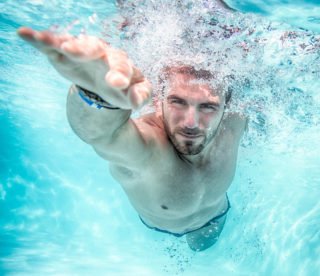 Differences in cryotherapy
Differences in cryotherapy
Before I get to share my experience and also some research findings on whole body cryotherapy, we just need to make sense of the different types of cryotherapy out there. It can be confusing.
The most long-standing and common form of “cryotherapy” is the application of ice or cold packs to injuries to cause blood vessels to constrict, which reduces blood flow and alleviates pain, swelling and inflammation.
Any use of ice or very cold materials to treat something technically qualifies as cryotherapy. This is where some of the confusion (perfectly understandably) comes from.
Cryoablation
There’s cryotherapy for freezing warts or skin tags and this is called cryoablation. Here a specialist will use a substance like liquid nitrogen or argon gas. Cryoablation can be used to treat a variety of skin conditions and some cancers, including prostate and liver cancer.
This therapy can treat tissue externally (on the skin) and internally (inside the body). It is minimally invasive, pain-free, and practiced most likely by a medically trained person to treat the following:
Then there is cryotherapy which uses nitrogen or argon gas to create extremely cold temperatures to destroy diseased tissue for cancer patients.
Doctors also use cryoprobes to treat tumors below the skin surface and deep in the body. Using image guidance, the doctor inserts one or more cryoprobes through the skin to the site of the diseased tissue. The cryoprobe delivers the liquid nitrogen or argon gas and freezes diseased tissue.
Cryosurgery
This should also not be confused with another form of localized “cryotherapy” called “cryosurgery”. Or fat freezing. With cryosurgery, specific areas of fat are frozen. The body is then meant to absorb this, ultimately flushing it out. It’s most often used in place of liposuction and is considered less invasive.
Ps. We wrote a story on this recently, which features supermodel Linda Evangelista’s experience with fat freezing. Warning. It’s not pretty.
Whole-body cryotherapy
This review is on whole-body cryotherapy (WBC) which involves standing in a freezing tank for just over three minutes at a temperature of fewer than 220 degrees Fahrenheit (-220 F or – 140 celsius.) Yes, you read it right. Some refer to it as “super cooling” of the body for therapeutic purposes.
Cryotherapy” starts at -166’F (or – 110 C). Anything warmer would be “Cold Therapy”.
Well, there is a purpose and exact science to this. So let’s look at the debate and research around it.
 The Japanese discovered cryotherapy
The Japanese discovered cryotherapy
It’s not new. In fact, it originated in Japan in the latter half of 1970s.
Japanese rheumatologist Toshima Yamaguchi has been mostly credited for first developing WBC. He recognized that the combination of cold and physical exercise was beneficial for the clinical outcomes of treatments received by his patients. These patients were battling rheumatoid arthritis. (Yamauchi et al., 1981a,b).
Growth in popularity of sports medicine
At present, the use of very cold air in special, controlled chambers can be considered for treating symptoms of various diseases (Bouzigon et al., 2016). Besides its clinical applications, a brief full-body exposure to dry air at cryogenic temperatures lower than −110°C (or -166 Fahrenheit) has become widely popular in sports medicine, often used to enhance recovery after injuries and to counteract inflammatory symptoms resulting from overuse or pathology (Furmanek et al., 2014).
The number of studies about the use of whole-body cryotherapy (WBC) in sports medicine is growing, however, it is still lower than the topic’s potential if the wide range of application of this methodology is considered. More studies are needed.
Celebrities have put whole-body cryotherapy on the map
Cryotherapy is not new to the US. For a few years already, media has reported that elite athletes and celebrities using whole-body cryotherapy have included Kobe Bryant, Lebron James, and France’s midfielder Amandine Henry. Some claim it can even improve appearance, slow aging, and shed body weight. Whole-body cryotherapy has been labeled as a new weight loss trend. However, there are no studies to substantiate this to date, and are anecdotal.
How does whole body cryotherapy work?
Firstly, the process is so easy. I walked into the Cryomed Boston center and within a few minutes was undressed and in the tank wearing just wooden socks and gloves. My head poked out over the top. From this position, I could still communicate at all times with the operator. I was also assured that if it was too uncomfortable at any time he could switch it off and I would get out. Additionally, I was also encouraged to move slowly around in the tank which makes it easier to endure the cold.
I was bathed in liquid nitrogen induced cold air. at – 220 F for just over three minutes.
The experience of whole-body cryotherapy
When I got out of the tank, my legs felt a little wobbly and were very red, but within ten minutes everything was back to normal and I was back on my bike and peddling my way home. The difference was that within a few hours and for the rest of the day I felt great. It is known that ultra-cold temperatures in whole-body cryotherapy can cause a positive physiological hormonal responses. And yes, I slept like a baby that night.
Why should you try it?
Nowadays, whole-body cryotherapy is a medical physical treatment widely used in sports medicine. Recovery from injuries (e.g., trauma, overuse) and after-season recovery are the main purposes for application.
However, the most recent studies confirmed the anti-inflammatory, anti-analgesic, and anti-oxidant effects of this therapy by highlighting the underlying physiological responses.
In addition to its therapeutic effects, whole-body cryotherapy has been demonstrated to be a preventive strategy against the damaging effects of exercise-induced inflammation and soreness. Novel findings have stressed the importance of fat mass on cooling effectiveness and starting fitness levels in the final result. Exposure to cryotherapy somehow mimics exercise, since it affects myokines expression in an exercise-like fashion. It may help support strategies for metabolic diseases such as obesity.
 The key benefits
The key benefits
The main benefits of whole body cryotherapy are circulation, musculoskeletal pain, and inflammation. Health professionals have used it to relieve pain and inflammation from conditions such as arthritis, fibromyalgia, ankylosing spondylitis, and injuries.
There are a fair number of studies. Many are positive, some are inconclusive. It must be noted that the U.S. Food and Drug Administration (FDA) has not yet approved whole-body cryotherapy as a medical treatment.
Pain relief and muscle healing
Whole-body cryotherapy helps with muscle pain, as well as some joint and muscle disorders, such as arthritis. It may also promote faster healing of athletic injuries.
Doctors have long recommended using ice packs on injured and painful muscles. Doing so may increase blood circulation after the ice pack is removed, promoting healing and pain relief.
Because cryotherapy helps with muscle pain, it could make it easier to get back to a fitness routine following an injury.
Reduced inflammation
Inflammation is one way the immune system fights infection. Sometimes the immune system becomes overly reactive. The result is chronic inflammation, which is linked to health problems, such as cancer, diabetes, depression, dementia, and arthritis.
As such, reducing inflammation could also improve overall health and reduce the risk of numerous chronic ailments.
Some studies suggest that cryotherapy can reduce inflammation. However, most research has been done on rats, so to confirm the data, more research is needed on people.
Preventing and treating
Because whole body cryotherapy might reduce inflammation, it is possible it could also lower the risk of developing cancer.
So far, there is no evidence that whole-body cryotherapy can treat cancer once the disease has developed. However, medical cryotherapy is a well-established treatment for certain forms of cancer.
Note: A doctor might use a cryoablation (this is not whole-body cryotherapy) to freeze cancer cells on the skin or cervix.
Reducing anxiety and depression
Research findings suggest that it could treat mental health conditions linked to inflammation. Some preliminary research on cryotherapy and mental health also supports this claim.
A 2008 study found that in a third of people with depression or anxiety, cryotherapy reduced symptoms by at least 50 percent. This was a much greater reduction than in people who did not undergo cryotherapy.
Improving symptoms of eczema
The chronic inflammatory skin condition known as eczema can cause intensely itchy patches of dry skin. A study of people with eczema had participants stop using eczema medications. They then tried cryotherapy. Many saw improvements in their eczema symptoms, though some complained of frostbite in small areas of the skin.
Treating Migraine Headaches
Targeted cryotherapy that focuses on the neck may help prevent migraine headaches. In a 2013 study, researchers applied cryotherapy to the necks of people who had migraines. The treatment reduced, but did not eliminate their pain.
 Preventing dementia
Preventing dementia
If cryotherapy reduces inflammation, it could also reduce the risk of developing dementia.
A 2012 paper suggested cryotherapy may be able to reduce inflammation and oxidative stress associated with dementia, mild cognitive impairment, and other age-related forms of cognitive decline.
Helps treat mood disorders
The ultra-cold temperatures in whole-body cryotherapy can cause physiological hormonal responses. This includes the release of adrenaline, noradrenaline, and endorphins. This can have a positive effect on those experiencing mood disorders like anxiety and depression. Another study found that whole-body cryotherapy was effective in short-term treatment for both.
Reduces arthritic pain
Localized cryotherapy treatment isn’t the only thing that’s effective at treating serious conditions; one study found that whole-body cryotherapy significantly reduced pain in people with arthritis. They found that the treatment was well-tolerated. It also allowed for more aggressive physiotherapy and occupational therapy as a result. This ultimately made rehabilitation programs more effective.
Is it safe?
Whole-body cryotherapy is generally safe, however, with any therapy, it may not be suitable for all. If you have an underlying medical condition that is not conducive to whole body cryotherapy, you should rather check in with your doctor.
In extreme cases or misuse, subjects run the risk of asphyxiation, frostbite, burns, and eye injury from extreme temperatures. Having a cryotherapy treatment for any longer than a few minutes can be dangerous if not fatal.
It’s important to choose a responsible and professional therapeutic center. You should never consider doing this therapy without supervision. Those who should not consider this therapy are:
- Pregnant women, children, people with severe high blood pressure, and people with heart conditions
- A person must never sleep during cryotherapy, and they should time each session to ensure it is not longer than the recommended timeframe.
- If you are hypertensive or have an underlying medical condition, you must discuss this treatment with your doctor.
- You should never use cryotherapy for longer than is recommended for the method of therapy you’re using. For whole body cryotherapy, this would take more than four minutes. If you’re using an ice pack or ice bath at home, you should never apply ice to the area for more than 20 minutes. Wrap ice packs in a towel so you don’t damage your skin.
- Those with diabetes or any conditions that affect their nerves should not use cryotherapy. They may be unable to fully feel its effect, which could lead to further nerve damage.
 The bottom line
The bottom line
I felt great after just one session. I would definitely go back, as this is a more efficient alternative to taking cold showers or freezing swims. Each session at Cryomed Boston costs around $50.
Whole-body cryotherapy is a growing business worldwide. Because this therapy is not regulated by the FDA, it has come under some criticism.
However, we found more positive than negative reviews and many research papers on the use of the therapy for a variety of medical reasons (listed below).
Upon checking the credentials of Boston Cryomed, I was satisfied they had been in business for several years with professional credentials. They also offer infra red sauna, ultra-red light therapy, IV drips among other therapies.
Dr. Daniela Winston is the medical practitioner who founded Boston Creamed. She graduated with honors from the University of Medicine and Pharmacy, Cluj- Napoca, Romania in 1996. Dr. Winston completed her Internal Medicine Residency at the University of Massachusetts Medical Center in Worcester in 2005 and has practiced as a hospitalist since. Dr. Winston is a member of the American Academy of Anti-Aging and Regenerative Medicine. She is trained in aesthetic dermatology, bio-identical hormonal rebalancing, and IV nutritional therapy. She has been on the faculty at Boston University School of Medicine.
References
-
Whole-Body Cryotherapy in Sports Medicine Patel, Karan MD; Baks-hi, Neil MD; Freehill, Michael T. MD; Awan, Tariq M. DO
-
Current Sports Medicine Reports: April 2019 – Volume 18 – Issue 4 – p 136-140 doi: 10.1249/JSR.0000000000000584
-
Whole-Body Cryotherapy in Athletes: From Therapy to Stimulation. An Updated Review of the Literature Giovanni Lombardi,1,* Ewa Ziemann,2 and Giuseppe Banfi,3
-
Banfi G., Krajewska M., Melegati G., Patacchini M. (2008). Effects of whole-body cryotherapy on haematological values in athletes. Br. J. Sports Med. 42, 858. [PubMed] [Google Scholar] Banfi G., Lombardi G., Colombini A., Lippi G. (2010a). Bone metabolism markers in sports medicine. Sports Med. 40, 697–714. 10.2165/11533090-000000000-00000 [PubMed] [CrossRef] [Google Scholar] Banfi G., Lombardi G., Colombini A., Melegati G. (2010b). Whole-body cryotherapy in athletes. Sports Med. 40, 509–517. 10.2165/11531940-000000000-00000 [PubMed] [CrossRef] [Google Scholar] Banfi G., Melegati G., Barassi A., d’Eril G. M. (2009a). Effects of the whole-body cryotherapy on NTproBNP, hsCRP and troponin I in athletes. J. Sci. Med. Sport 12, 609–610. 10.1016/j.jsams.2008.06.004 [PubMed] [CrossRef] [Google Scholar] Banfi G., Melegati G., Barassi A., Dogliotti G., d’Eril G. M., Dugue B., et al. (2009b). Effects of whole-body cryotherapy on serum mediators of inflammation and serum muscle enzymes in athletes. J. Therm. Biol. 34, 55–59. 10.1016/j.jtherbio.2008.10.003 [CrossRef] [Google Scholar]
-
Bettoni L., Bonomi F. G., Zani V., Manisco L., Indelicato A., Lanteri P., et al.. (2013). Effects of 15 consecutive cryotherapy sessions on the clinical output of fibromyalgic patients. Clin. Rheumatol. 32, 1337–1345. 10.1007/s10067-013-2280-9 [PubMed] [CrossRef] [Google Scholar]
-
Bleakley C. M., Hopkins T. J. (2010). Is it possible to achieve optimal levels of tissue cooling in cryotherapy? Phys. Ther. Rev. 15, 344–351. 10.1179/174328810X12786297204873 [CrossRef] [Google Scholar]
-
Bleakley C. M., Bieuzen F., Davison G. W., Costello J. T. (2014). Whole-body cryotherapy: empirical evidence and theoretical perspectives. Open Access J. Sports Med. 5, 25–36. 10.2147/OAJSM.S41655 [PMC free article] [PubMed] [CrossRef] [Google Scholar]
-
Boström P., Wu J., Jedrychowski M. P., Korde A., Ye L., Lo J. C., et al.. (2012). A PGC1-α-dependent myokine that drives brown-fat-like development of white fat and thermogenesis. Nature 481, 463–468. 10.1038/nature10777 [PMC free article] [PubMed] [CrossRef] [Google Scholar]
-
Bouzigon R., Grappe F., Ravier G., Dugue B. (2016). Whole-body and partial-body cyostimulation/cryotherapy: current technologies and practical applications. J. Therm. Biol. 61, 67–81. 10.1016/j.jtherbio.2016.08.009 [PubMed] [CrossRef] [Google Scholar]
-
Cholewka A., Stanek A., Sieron A., Drzazga Z. (2012). Thermography study of skin response due to whole-body cryotherapy. Skin Res. Technol. 18, 180–187. 10.1111/j.1600-0846.2011.00550.x [PubMed] [CrossRef] [Google Scholar]
-
Collins N. C. (2008). Is ice right? Does cryotherapy improve outcome for acute soft tissue injury? Emer. Med. J. 25, 65–68. 10.1136/emj.2007.051664 [PubMed] [CrossRef] [Google Scholar]
-
Costello J. T., Algar L. A., Donnelly A. E. (2012a). Effects of whole-body cryotherapy (−110°C) on proprioception and indices of muscle damage. Scand. J. Med. Sci. Sports 22, 190–198. 10.1111/j.1600-0838.2011.01292.x [PubMed] [CrossRef] [Google Scholar]
-
Costello J. T., Baker P. R., Minett G. M., Bieuzen F., Stewart I. B., Bleakley C. (2015). Whole-body cryotherapy (extreme cold air exposure) for preventing and treating muscle soreness after exercise in adults. Cochrane Database Syst. Rev. CD010789. 10.1002/14651858.CD010789.pub2 [PubMed] [CrossRef] [Google Scholar]
-
Costello J. T., Culligan K., Selfe J., Donnelly A. E. (2012b). Muscle, skin and core temperature after −110°C cold air and 8°C water treatment. PLoS ONE 7:e48190. 10.1371/journal.pone.0048190 [PMC free article] [PubMed] [CrossRef] [Google Scholar]
-
Costello J. T., Donnelly A. E., Karki A., Selfe J. (2014). Effects of whole body cryotherapy and cold water immersion on knee skin temperature. Int. J. Sports Med. 35, 35–40. 10.1055/s-0033-1343410 [PubMed] [CrossRef] [Google Scholar]
-
Dugué B. M. (2015). An attempt to improve Ferreira-Junior model concerning the anti-inflammatory action of whole-body cryotherapy after exercise induced muscular damage (EIMD). Front. Physiol. 6:35. 10.3389/fphys.2015.00035 [PMC free article] [PubMed] [CrossRef] [Google Scholar]
-
Dulian K., Laskowski R., Grzywacz T., Kujach S., Flis D. J., Smaruj M., et al.. (2015). The whole body cryostimulation modifies irisin concentration and reduces inflammation in middle aged, obese men. Cryobiology 71, 398–404. 10.1016/j.cryobiol.2015.10.143 [PubMed] [CrossRef] [Google Scholar]
-
Ferreira-Junior J. B., Bottaro M., Loenneke J. P., Vieira A., Vieira C. A., Bemben M. G. (2014). Could whole-body cryotherapy (below −100°C) improve muscle recovery from muscle damage? Front. Physiol. 5:247. 10.3389/fphys.2014.00247 [PMC free article] [PubMed] [CrossRef] [Google Scholar]
-
Furmanek M. P., Slomka K., Juras G. (2014). The effects of cryotherapy on proprioception system. Biomed. Res. Int. 2014:696397. 10.1155/2014/696397 [PMC free article] [PubMed] [CrossRef] [Google Scholar]
-
Galliera E., Dogliotti G., Melegati G., Corsi Romanelli M. M., Cabitza P., Banfi G. (2012). Bone remodelling biomarkers after whole body cryotherapy (WBC) in elite rugby players. Injury 44, 1117–1121. 10.1016/j.injury.2012.08.057 [PubMed] [CrossRef] [Google Scholar]
-
Hammond L. E., Cuttell S., Nunley P., Meyler J. (2014). Anthropometric characteristics and sex influence magnitude of skin cooling following exposure to whole body cryotherapy. Biomed Res. Int. 2014:628724. 10.1155/2014/628724 [PMC free article] [PubMed] [CrossRef] [Google Scholar]
-
Hausswirth C., Louis J., Bieuzen F., Pournot H., Fournier J., Filliard J. R., et al.. (2011). Effects of whole-body cryotherapy vs. far-infrared vs. passive modalities on recovery from exercise-induced muscle damage in highly-trained runners. PLoS ONE 6:e27749. 10.1371/journal.pone.0027749 [PMC free article] [PubMed] [CrossRef] [Google Scholar]
-
Hausswirth C., Schaal K., Le Meur Y., Bieuzen F., Filliard J. R., Volondat M., et al.. (2013). Parasympathetic activity and blood catecholamine responses following a single partial-body cryostimulation and a whole-body cryostimulation. PLoS ONE 8:e72658. 10.1371/journal.pone.0072658 [PMC free article] [PubMed] [CrossRef] [Google Scholar]
-
Hornery D. J., Papalia S., Mujika I., Hahn A. (2005). Physiological and performance benefits of halftime cooling. J. Sci. Med. Sport 8, 15–25. 10.1016/S1440-2440(05)80020-9 [PubMed] [CrossRef] [Google Scholar]
-
Jastrzabek R., Straburzynska-Lupa A., Rutkowski R., Romanowski W. (2013). Effects of different local cryotherapies on systemic levels of TNF-α, IL-6, and clinical parameters in active rheumatoid arthritis. Rheumatol. Int. 33, 2053–2060. 10.1007/s00296-013-2692-5 [PubMed] [CrossRef] [Google Scholar]
-
Krüger M., de Marees M., Dittmar K. H., Sperlich B., Mester J. (2015). Whole-body cryotherapy’s enhancement of acute recovery of running performance in well-trained athletes. Int. J. Sports Physiol. Perform. 10, 605–612. 10.1123/ijspp.2014-0392 [PubMed] [CrossRef] [Google Scholar]
-
Lee P., Linderman J. D., Smith S., Brychta R. J., Wang J., Idelson C., et al.. (2014). Irisin and FGF21 are cold-induced endocrine activators of brown fat function in humans. Cell Metab. 19, 302–309. 10.1016/j.cmet.2013.12.017 [PMC free article] [PubMed] [CrossRef] [Google Scholar]
-
Lombardi G., Lanteri P., Graziani G., Colombini A., Banfi G., Corsetti R. (2012). Bone and energy metabolism parameters in professional cyclists during the Giro d’Italia 3-weeks stage race. PLoS ONE 7:e42077. 10.1371/journal.pone.0042077 [PMC free article] [PubMed] [CrossRef] [Google Scholar]
-
Lombardi G., Lanteri P., Porcelli S., Mauri C., Colombini A., Grasso D., et al.. (2013a). Hematological profile and martial status in rugby players during whole body cryostimulation. PLoS ONE 8:e55803. 10.1371/journal.pone.0055803 [PMC free article] [PubMed] [CrossRef] [Google Scholar]
-
Lombardi G., Lippi G., Banfi G. (2013b). Iron requirements and iron status of athletes, in Sports Nutrition, ed Moughan R. J.(Hoboken, NJ: Wiley-Blackwell; John Wiley & Sons, Inc.), 229–241. 10.1002/9781118692318.ch19 [CrossRef] [Google Scholar]
-
Lubkowska A., Szygula Z. (2010). Changes in blood pressure with compensatory heart rate decrease and in the level of aerobic capacity in response to repeated whole-body cryostimulation in normotensive, young and physically active men. Int. J. Occup. Med. Environ. Health 23, 367–375. 10.2478/v10001-010-0037-0 [PubMed] [CrossRef] [Google Scholar]
-
Lubkowska A., Dolegowska B., Szygula Z. (2012). Whole-body cryostimulation – potential beneficial treatment for improving antioxidant capacity in healthy men – significance of the number of sessions. PLoS ONE 7:e46352. 10.1371/journal.pone.0046352 [PMC free article] [PubMed] [CrossRef] [Google Scholar]
-
Lubkowska A., Dudzinska W., Bryczkowska I., Dolegowska B. (2015). Body composition, lipid profile, adipokine concentration, and antioxidant capacity changes during interventions to treat overweight with exercise programme and whole-body cryostimulation. Oxid. Med. Cell. Longev. 2015:803197. 10.1155/2015/803197 [PMC free article] [PubMed] [CrossRef] [Google Scholar]
-
Lubkowska A., Szygula Z., Chlubek D., Banfi G. (2011). The effect of prolonged whole-body cryostimulation treatment with different amounts of sessions on chosen pro- and anti-inflammatory cytokines levels in healthy men. Scand. J. Clin. Lab. Invest. 71, 419–425. 10.3109/00365513.2011.580859 [PubMed] [CrossRef] [Google Scholar]
-
Lubkowska A., Szygula Z., Klimek A. J., Torii M. (2010b). Do sessions of cryostimulation have influence on white blood cell count, level of IL6 and total oxidative and antioxidative status in healthy men? Eur. J. Appl. Physiol. 109, 67–72. 10.1007/s00421-009-1207-2 [PubMed] [CrossRef] [Google Scholar]
-
Mila-Kierzenkowska C., Jurecka A., Wozniak A., Szpinda M., Augustynska B., Wozniak B. (2013). The effect of submaximal exercise preceded by single whole-body cryotherapy on the markers of oxidative stress and inflammation in blood of volleyball players. Oxid. Med. Cell. Longev. 2013:409567. 10.1155/2013/409567 [PMC free article] [PubMed] [CrossRef] [Google Scholar]
-
Miller E., Markiewicz L., Saluk J., Majsterek I. (2012). Effect of short-term cryostimulation on antioxidative status and its clinical applications in humans. Eur. J. Appl. Physiol. 112, 1645–1652. 10.1007/s00421-011-2122-x [PMC free article] [PubMed] [CrossRef] [Google Scholar]
-
Peake J. M., Della Gatta P., Suzuki K., Nieman D. C. (2015). Cytokine expression and secretion by skeletal muscle cells: regulatory mechanisms and exercise effects. Exerc. Immunol. Rev. 21, 8–25. [PubMed] [Google Scholar]
-
Poppendieck W., Faude O., Wegmann M., Meyer T. (2013). Cooling and performance recovery of trained athletes: a meta-analytical review. Int. J. Sports Physiol. Perform. 8, 227–242. 10.1123/ijspp.8.3.227 [PubMed] [CrossRef] [Google Scholar]
-
Pournot H., Bieuzen F., Louis J., Mounier R., Fillard J. R., Barbiche E., et al.. (2011). Time-course of changes in inflammatory response after whole-body cryotherapy multi exposures following severe exercise. PLoS ONE 6:e22748. 10.1371/annotation/0adb3312-7d2b-459c-97f7-a09cfecf5881 [PMC free article] [PubMed] [CrossRef] [Google Scholar]
-
Roberts L. A., Raastad T., Markworth J. F., Figueiredo V. C., Egner I. M., Shield A., et al.. (2015). Post-exercise cold water immersion attenuates acute anabolic signalling and long-term adaptations in muscle to strength training. J. Physiol. 593, 4285–4301. 10.1113/JP270570 [PMC free article] [PubMed] [CrossRef] [Google Scholar]
-
Robinson N., Sottas P. E., Pottgiesser T., Schumacher Y. O., Saugy M. (2011). Stability and robustness of blood variables in an antidoping context. Int. J. Lab. Hematol. 33, 146–153. 10.1111/j.1751-553X.2010.01256.x [PubMed] [CrossRef] [Google Scholar]
-
Russell M., Birch J., Love T., Cook C. J., Bracken R. M., Taylor T., et al.. (2017). The effects of a single whole-body cryotherapy exposure on physiological, performance, and perceptual responses of professional academy soccer players after repeated sprint exercise. J. Strength Cond. Res. 31, 415–421. 10.1519/JSC.0000000000001505 [PubMed] [CrossRef] [Google Scholar]
-
Schaal K., LE Meur Y., Louis J., Filliard J. R., Hellard P., Casazza G., et al.. (2015). Whole-body cryostimulation limits overreaching in elite synchronized swimmers. Med. Sci. Sports Exerc. 47, 1416–1425. 10.1249/MSS.0000000000000546 [PubMed] [CrossRef] [Google Scholar]
-
Selfe J., Alexander J., Costello J. T., May K., Garratt N., Atkins S., et al.. (2014). The effect of three different (−135°C) whole body cryotherapy exposure durations on elite rugby league players. PLoS ONE 9:e86420. 10.1371/journal.pone.0086420 [PMC free article] [PubMed] [CrossRef] [Google Scholar]
-
Slattery K., Bentley D., Coutts A. J. (2015). The role of oxidative, inflammatory and neuroendocrinological systems during exercise stress in athletes: implications of antioxidant supplementation on physiological adaptation during intensified physical training. Sports Med. 45, 453–471. 10.1007/s40279-014-0282-7 [PubMed] [CrossRef] [Google Scholar]
-
Smolander J., Westerlund T., Uusitalo A., Dugue B., Oksa J., Mikkelsson M. (2006). Lung function after acute and repeated exposures to extremely cold air (−110°C) during whole-body cryotherapy. Clin. Physiol. Funct. Imaging 26, 232–234. 10.1111/j.1475-097X.2006.00675.x [PubMed] [CrossRef] [Google Scholar]
-
Sottas P. E., Robinson N., Saugy M. (2010). The athlete’s biological passport and indirect markers of blood doping. Handb. Exp. Pharmacol. 195, 305–326. 10.1007/978-3-540-79088-4_14 [PubMed] [CrossRef] [Google Scholar]
-
Straburzyńska-Lupa A., Konarska A., Nowak A., Straburzyńska-Migaj E., Konarski J., Kijewski K., et al. (2007). Effect of whole-body cryotherapy on selected blood chemistry parameters in professional field hockey players. Fizjoter. Pol. 7, 15–20. [Google Scholar]
-
Sutkowy P., Augustynska B., Wozniak A., Rakowski A. (2014). Physical exercise combined with whole-body cryotherapy in evaluating the level of lipid peroxidation products and other oxidant stress indicators in kayakers. Oxid. Med. Cell. Longev. 2014:402631. 10.1155/2014/402631 [PMC free article] [PubMed] [CrossRef] [Google Scholar]
-
Szygula Z., Lubkowska A., Giemza C., Skrzek A., Bryczkowska I., Dolegowska B. (2014). Hematological parameters, and hematopoietic growth factors: EPO and IL-3 in response to whole-body cryostimulation (WBC) in military academy students. PLoS ONE 9:e93096. 10.1371/journal.pone.0093096 [PMC free article] [PubMed] [CrossRef] [Google Scholar]
-
Wozniak A., Mila-Kierzenkowska C., Szpinda M., Chwalbinska-Moneta J., Augustynska B., Jurecka A. (2013). Whole-body cryostimulation and oxidative stress in rowers: the preliminary results. Arch. Med. Sci. 9, 303–308. 10.5114/aoms.2012.30835 [PMC free article] [PubMed] [CrossRef] [Google Scholar]Wozniak A., Wozniak B., Drewa G., Mila-Kierzenkowska C., Rakowski A. (2007). The effect of whole-body cryostimulation on lysosomal enzyme activity in kayakers during training. Eur. J. Appl. Physiol. 100, 137–142. 10.1007/s00421-007-0404-0 [PubMed] [CrossRef] [Google Scholar]
-
Yamauchi T., Kim S., Nogami S., Kawano A. D. (1981a). Extreme cold treatment (−150°C) on the whole body in rheumatoid arthritis. Rev. Rheum 48(Suppl.):P1054. [Google Scholar] Yamauchi T., Nogami S., Miura K. (1981b). Various application of the extreme cryotherapy and strenuous exercise program. Physiother. Rehab. 5, 35–39. [Google Scholar]
-
Zalewski P., Bitner A., Slomko J., Szrajda J., Klawe J. J., Tafil-Klawe M., et al.. (2014). Whole-body cryostimulation increases parasympathetic outflow and decreases core body temperature. J. Therm. Biol. 45, 75–80. 10.1016/j.jtherbio.2014.08.001 [PubMed] [CrossRef] [Google Scholar]
-
Ziemann E., Olek R. A., Grzywacz T., Antosiewicz J., Kujach S., Luszczyk M., et al.. (2013). Whole-body cryostimulation as an effective method of reducing low-grade inflammation in obese men. J. Physiol. Sci. 63, 333–343. 10.1007/s12576-013-0269-4 [PMC free article] [PubMed] [CrossRef] [Google Scholar] Ziemann E., Olek R. A., Grzywacz T., Kaczor J. J., Antosiewicz J., Skrobot W., et al.. (2014). Whole-body cryostimulation as an effective way of reducing exercise-induced inflammation and blood cholesterol in young men. Eur. Cytokine Netw. 25, 14–23. 10.1684/ecn.2014.0349 [PubMed] [CrossRef] [Google Scholar]Ziemann E., Olek R. A., Kujach S., Grzywacz T., Antosiewicz J., Garsztka T., et al.. (2012). Five-day whole-body cryostimulation, blood inflammatory markers, and performance in high-ranking professional tennis players. J. Athl. Train. 47, 664–672. 10.4085/1062-6050-47.6.13 [PMC free article] [PubMed] [CrossRef] [Google Scholar]


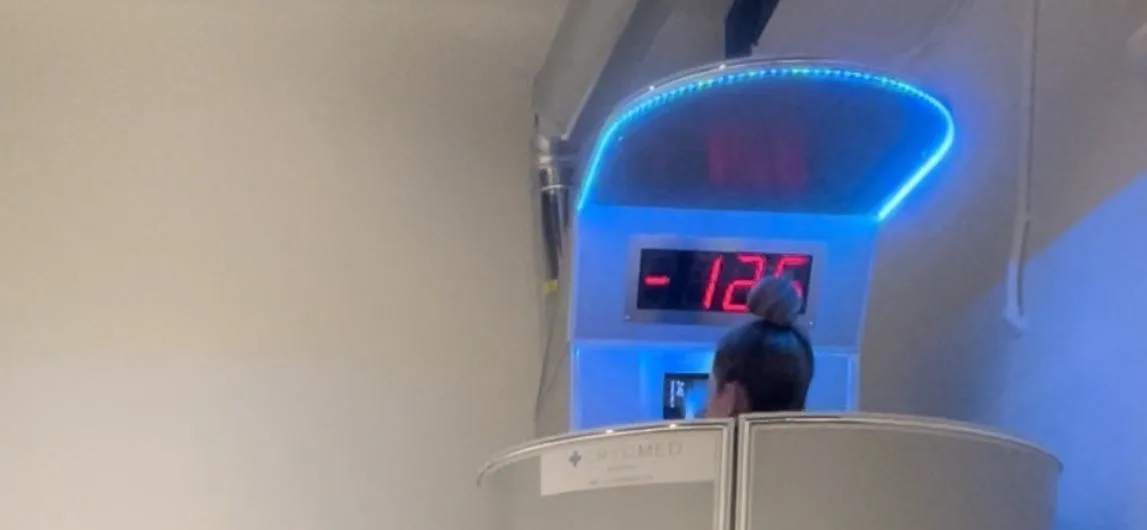
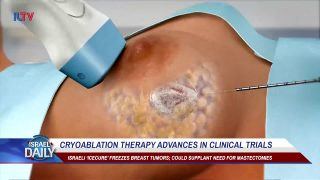 Then there is cryotherapy which uses nitrogen or argon gas to create extremely cold temperatures to destroy diseased tissue for cancer patients.
Then there is cryotherapy which uses nitrogen or argon gas to create extremely cold temperatures to destroy diseased tissue for cancer patients.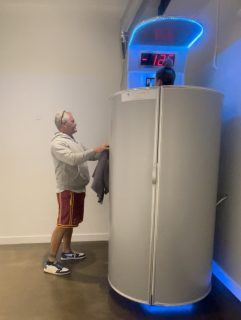 The Japanese discovered cryotherapy
The Japanese discovered cryotherapy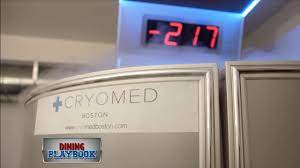
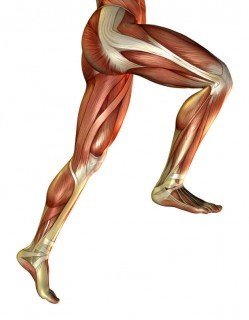 The key benefits
The key benefits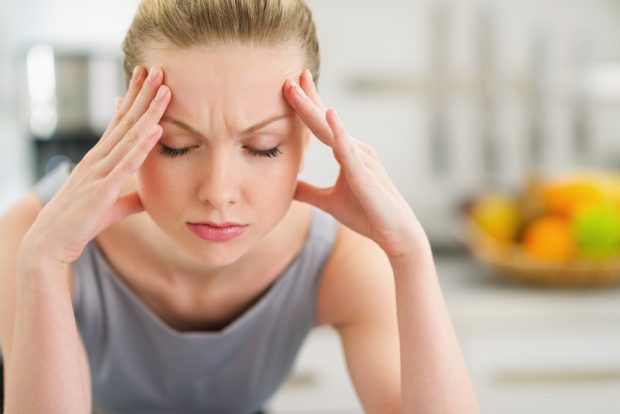 Preventing dementia
Preventing dementia![women [longevity live]](https://longevitylive.com/wp-content/uploads/2020/01/photo-of-women-walking-down-the-street-1116984-100x100.jpg)










